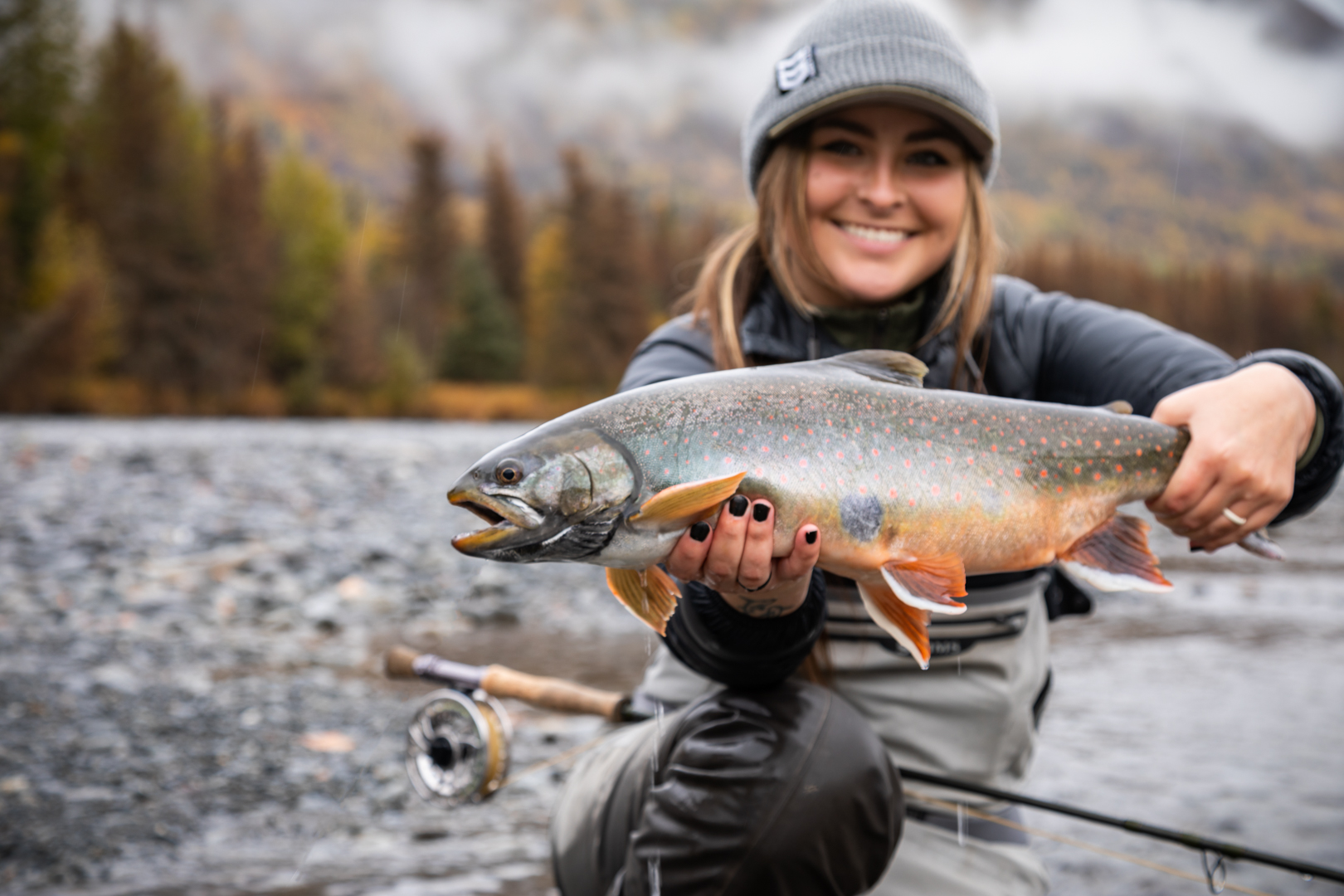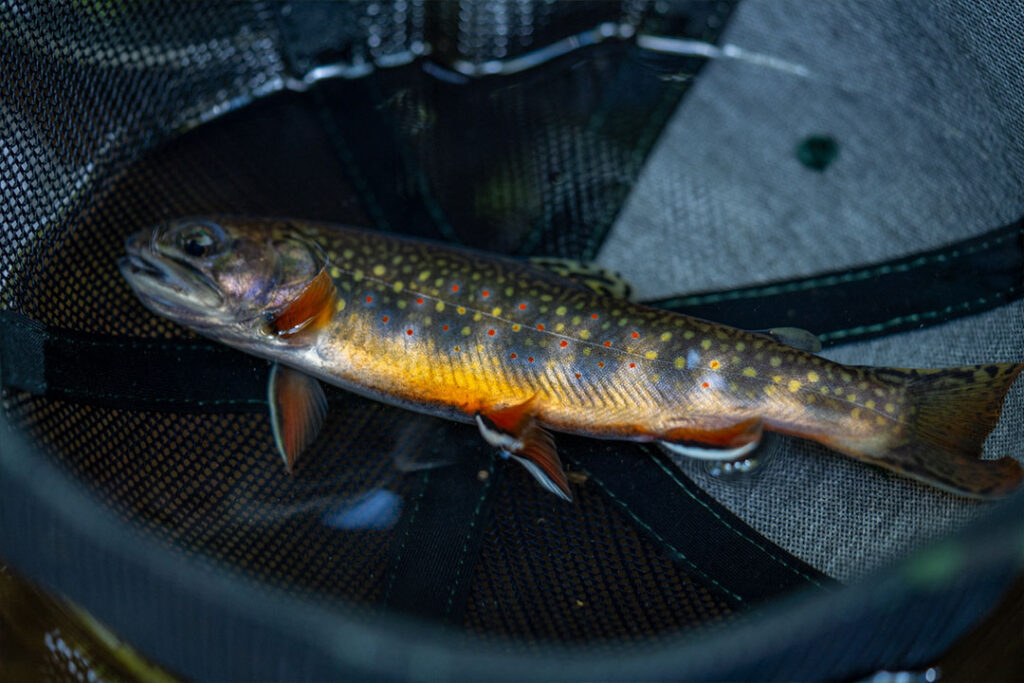Alaska is known for some excellent salmon and steelhead fishing, but a species often overlooked is the Dolly Varden.
Dolly Varden are typically gray accompanied by white, pink, or orange spots. They are very commonly confused with bull or brook trout, but in Alaska are actually part of the char family, though also not to be confused with an Arctic Char, (all Dollies are char, but not all chars are dollies).

Photo: Kory Robbins
Dolly Varden are caught almost anywhere in Alaska. Just like any targeted species in Alaska, the Dolly Varden’s diet revolves highly around the system of our salmon. As a result, typical tackle includes various forms of flesh flies and beads resembling salmon flesh and eggs. Other forms of food including dry flies and leeches/sculpins have also shown success.
During what we like to call “bead drop” season, when salmon are in peak spawn, is when we have the most productive days catching and releasing Dolly Varden. Kory and I have had trips of netting around 55 Dolly Varden each, totaling over 100 dollies being caught and released.
Size-wise, the average Dolly Varden can measure anywhere between 10-18”. My personal best is 25”, and the state record is measured at 27 lbs. With that being said, recommended gear would be smaller weight set-ups, anything between a 4wt and a 6wt. A TFO reel paired with the Blue Ribbon rod or, my personal favorite, the LK Legacy rod, are perfect set-ups to match with a Dolly Varden (or 20).

Photo: Kory Robbins
In my experience, I have come to recognize the fights between trouts and Dolly Varden. The trout will notoriously shake their heads, resulting in a more twitchy fight. The dollies, however, stay much lower in the water, and run in short bursts rather than exerting all their energy at once.
Fun Fact – The Dolly Bounty of 1921
Before Alaska was declared a state, the territory created an official extinction program between 1921 and 1941 to reduce the population of Dolly Varden. In comparison to other trout and salmon, Dollys were least desirable and posed a threat to the reigning species. This was due to the fact that they were eating the eggs and fry of the other species, a nuisance that was leading to the decline of population.
This program created incentive by paying a bounty on Dolly Varden tails. (A whopping 2.5 cents per tail, or a ring of 40 tails for $1.) Between those years, the bounty for the Varden tails were so popular, they turned into a form of currency that would be used for trading or local airfare. Unfortunately, many of the tails turned in for payment were misidentified and were in fact the tails of coho salmon and trout, bringing the bounty to an end. Ironic, isn’t it?
Blog written and photos provided by TFO Ambassadors Tessa Shetter & Kory Robbins.

Photo: Kory Robbins
![]()






